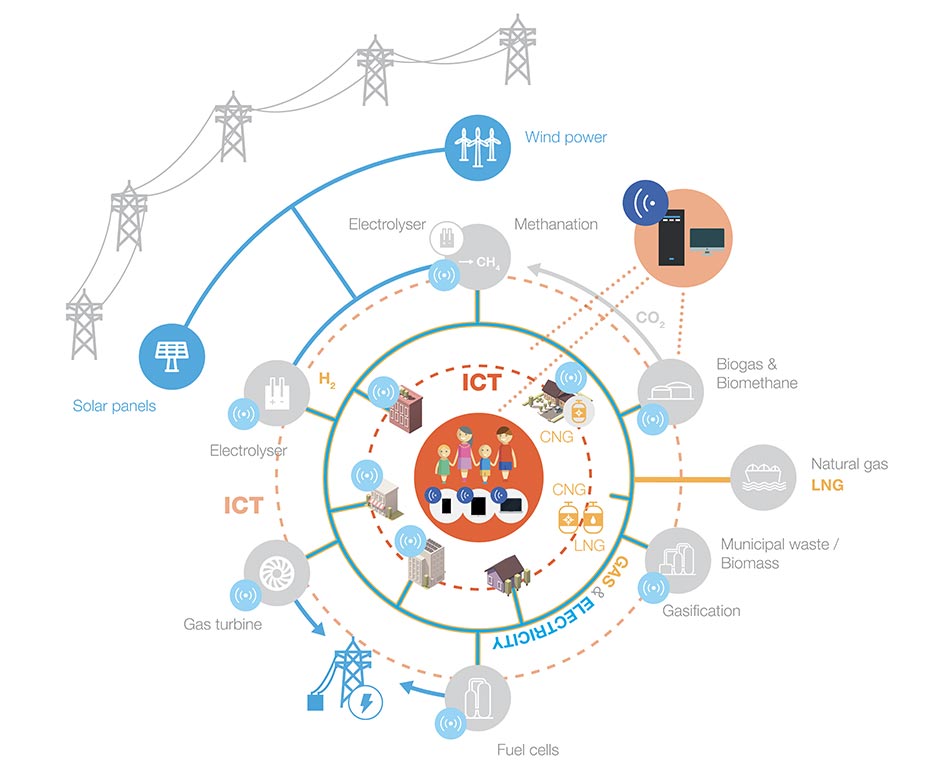Decarbonisation, decentralisation and digitalisation
By joining the Green Deal, the European Union has committed to reducing net greenhouse gas emissions to zero by 2050, with intermediate targets for 2030 and 2040. The action plan includes both the promotion of the efficient use of resources by moving towards a clean, circular economy, and the restoration of biodiversity and reduction of pollution.
Smart Grids can greatly contribute to achieving these European objectives. In regard to electricity distribution, implementing Smart Grids means:
- exploiting information technologies to enable the exchange of data and information between the various nodes in order to optimize flows;
- transforming the role of the final consumer from passive user to producer of energy (for example, via solar panels on their roofs) and informer that helps the grid to plan efficient usage and prevent peaks in power and excess production;
- maximising the safety and eliminating leakage and waste and thus reducing consumption;
- integrating Distributed Energy Resources (DER) within the grid, changing the distribution model from oligarchic to distributed. The more small renewable energy plants become more widespread, the closer the places where energy is produced and consumed will become (even coinciding in some cases), leading to the elimination of leakage on long transmission backbones.

Smart Grids for electricity and gas distribution

